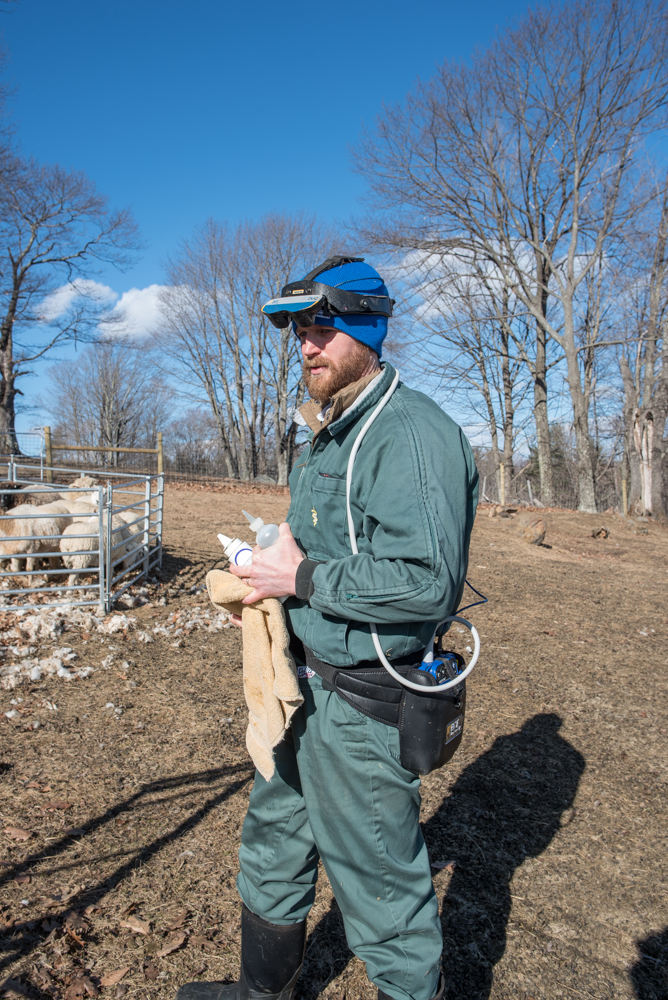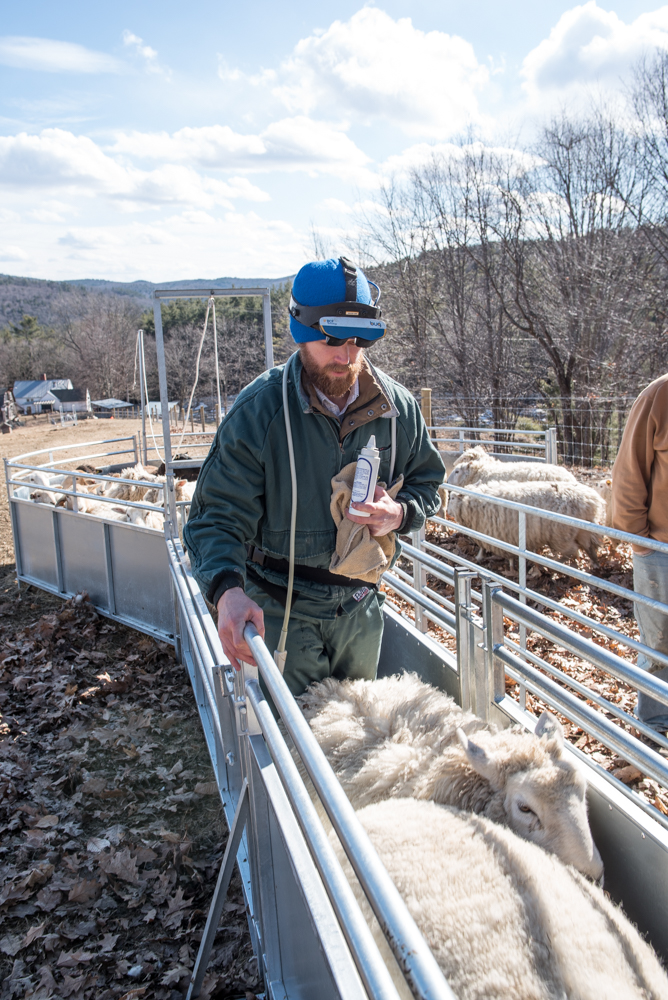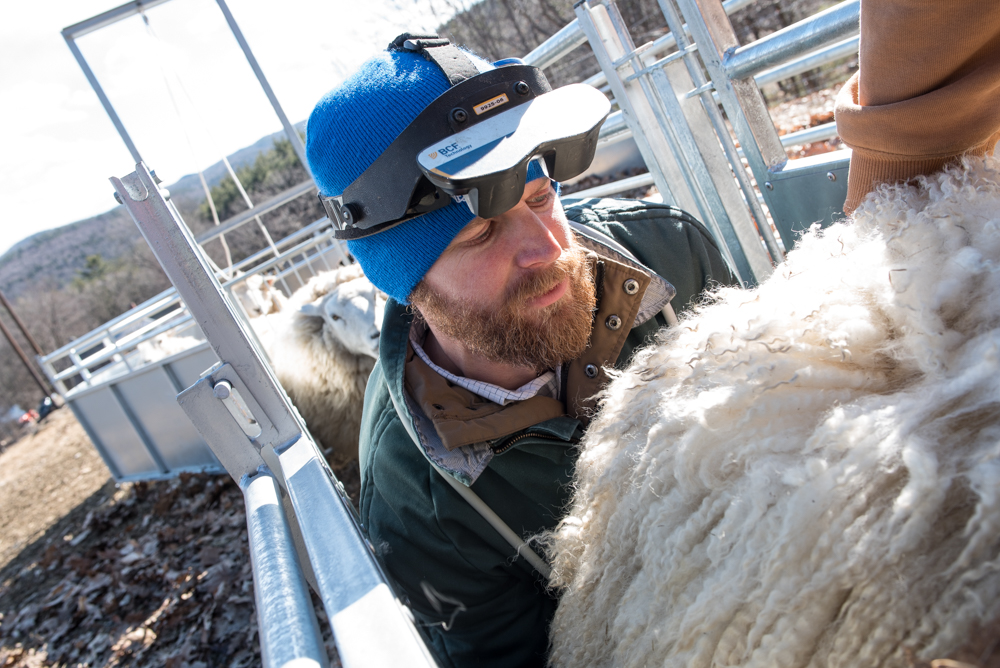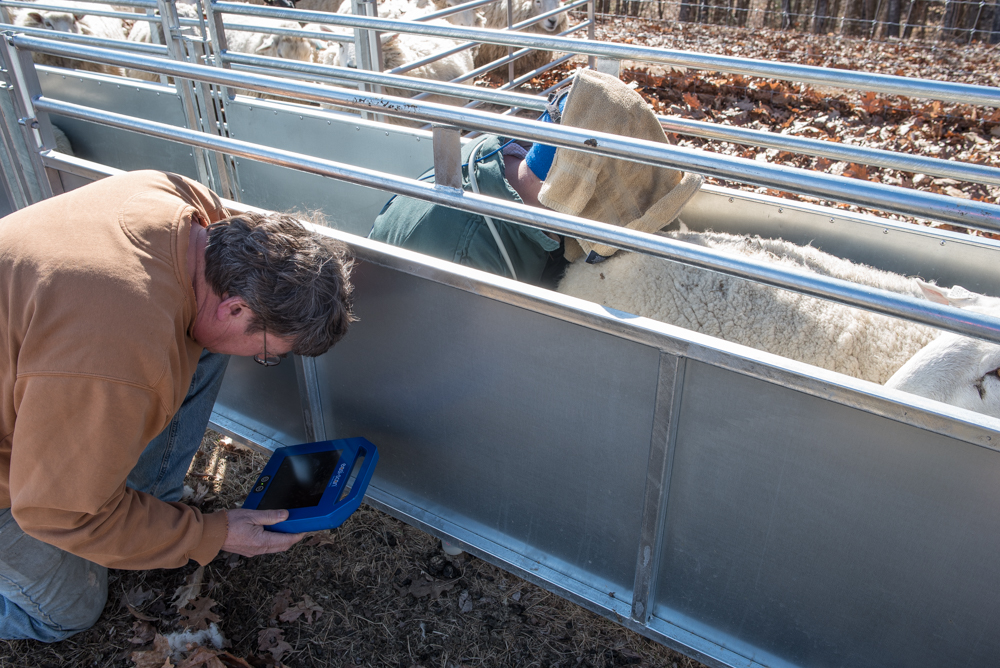For a matter as binary as pregnancy, the state of my sheep has been more ambiguous than I would have expected. A more accepting person would perhaps be at peace with the idea that either they give birth or they don’t, and then you know if they were pregnant. I’m a fair measure more uptight than that, and the ambiguity has already allowed Bravo to eat one (and perhaps two) lambs, so today we set out to establish some facts. In attendance with me were Bill Fosher, grazing mentor, Simon Gascoyne, large animal veterinarian, and 19 sheep who may or may not have been pregnant. Simon brought his ultrasound machine, allowing him to directly image any fetuses that were present and thus banish uncertainty in this realm.


 With sheep, the probe is used externally (cows are less fortunate) on the abdomen, and Simon can see the ultrasound-generated image on a version of virtual-reality goggles. The bright sun necessitated a towel over his head, while Bill watched the image projected onto an external monitor.
With sheep, the probe is used externally (cows are less fortunate) on the abdomen, and Simon can see the ultrasound-generated image on a version of virtual-reality goggles. The bright sun necessitated a towel over his head, while Bill watched the image projected onto an external monitor.

The harvest of facts:
- Jenny Hughes helped me bring 2 ewes into the barn last Sunday, one of whom was clearly close to lambing, and another whose circumstances were less clear. I was worried that the second ewe might have lambed on pasture, which would mean that Bravo had eaten a second lamb. We found that the second ewe is currently in early pregnancy, probably due in mid to late May, so Bravo is off the hook. This ewe was supposedly bred before arriving at my place, along with the others who have already lambed, but now I know she arrived open (not pregnant) and was bred by my ram in December (147 days gestation).
- I got 9 ewes from Kate Collins’s farm, all supposedly open. When I put my ram in with them, though, none got marked by the oily crayon the ram wears to show his progress through the flock. I wasn’t sure if the ewes were already pregnant, didn’t get bred, or simply didn’t get marked. Today we found that 6 of the 9 ewes were indeed pregnant and due in May, so it seems that the marking harness failed rather than the reproductive machinery. Two of the three who weren’t pregnant were pure-bred Romneys, sheep known for very short periods of fertility. By putting my ram in with them on 7 December, it seems I missed their window of fecundity for the year. I have less idea why the other ewe, a Romney-Cheviot cross, wasn’t bred, but between new farm, young ram, and a frisky guardian dog, something clearly went wrong. I’m hoping that this year will present less adversity.
- Nine ewes did get marked by the ram, and all are pregnant, due in mid May to early June. This is the fact I was fairly certain of, but it’s nice to be sure.
- One other ewe was open, from the same flock as the ones currently lambing. Those sheep arrived to me very thin and with a significant parasite load, either of which could impair fertility. If she’s in better shape this fall, I assume she’ll get bred.
So of my 27 adult ewes, 6 have already lambed, one is due this weekend, 4 are not pregnant, one lost her lamb to Bravo, and 15 are due in May or early June. Nary an alternate fact among’em.
______________
Postscript: I’m still getting used to the realities of veterinary medicine on a farm. My first surprise was the extent to which large animal vets assume farmers are competent people. I’ve called my vet a couple of times with problems whose solution was some medication or other. He would leave me bottles of meds at his office’s front desk with instructions about dosage, and administering the injections was left to me. The other shock is pricing. The last time I had an ultrasound, the bill to my insurance company ran into the thousands of dollars. Today’s work was included in the cost of a $125 farm visit. If I’d been less chatty, we could have run pregnancy checks on twice as many sheep. I’m still trying to figure out what conclusions to draw from all this, but I’m not inclined to complain…
Tagged: Bill Fosher, ewes, facts, Hollow Oak Farm, lambing, lambs, pregnancy, Simon Gascoyne, ultrasound